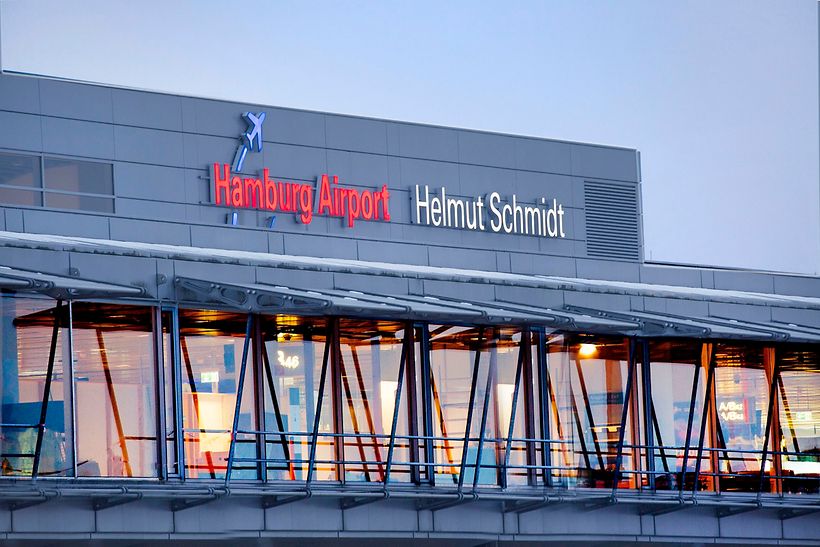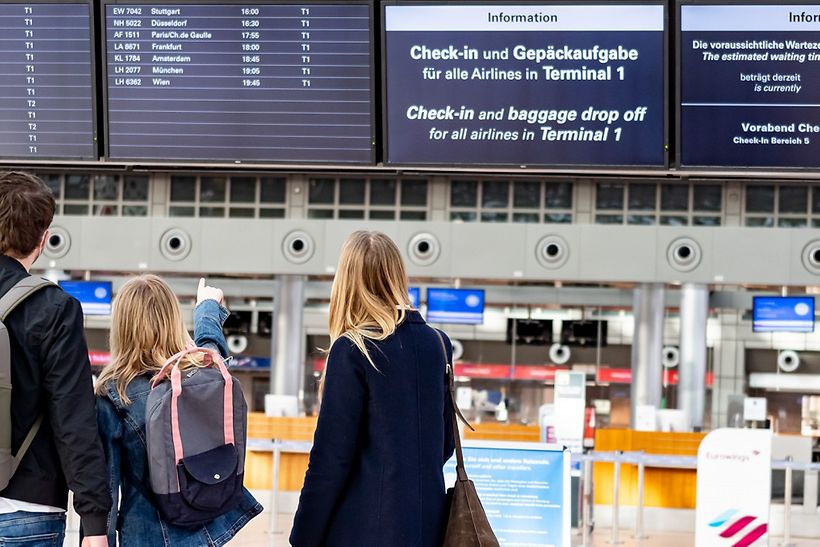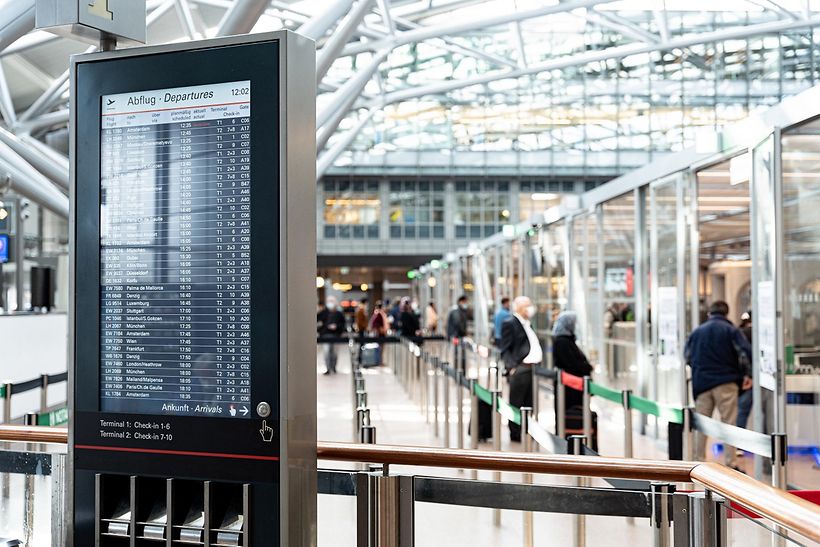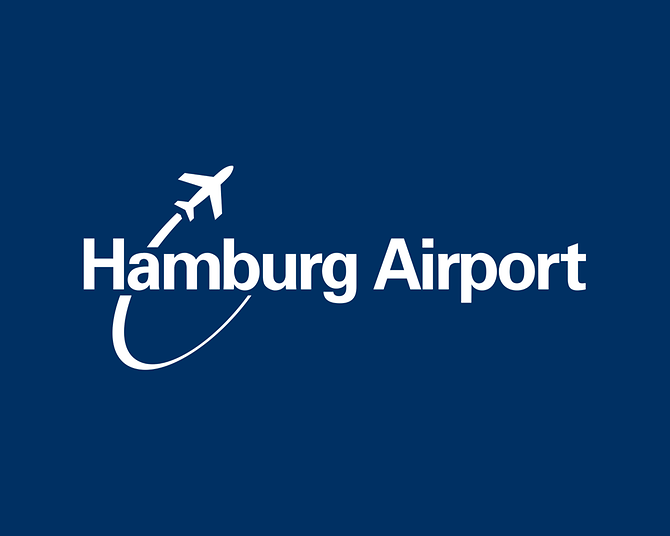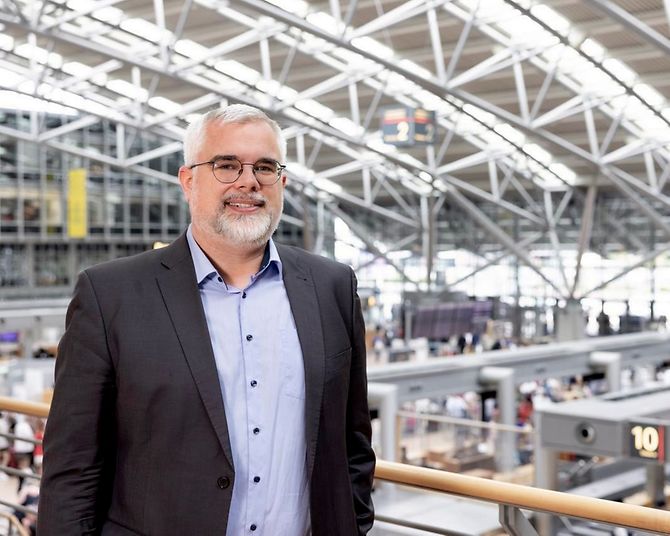Second consecutive corona year: Around 5.32 million passengers used Hamburg Airport
Aviation only recovering gradually // Glimmer of hope: more cargo airlines at Hamburg Airport // Sights firmly set on climate protection targets despite crisis
05.01.2022
After months of stagnation, first signs of a recovery were seen at Hamburg Airport from summer 2021. Traffic figures rose steadily, reaching a high point during the autumn holiday season. But aviation is still a long way from normality. As the fourth coronavirus wave began, passenger figures sank again, resulting in traffic figures of around 5.32 passengers in 2021, below expectations. Despite these challenging circumstances, the airlines maintained, and in some cases even extended, the variety within the Hamburg route network. Nevertheless, the effects of the pandemic are also shaping the start of the new year.
Passenger figures only recovering slowly
By the end of 2021, 5.32 million passengers used Hamburg Airport, 69 percent less than in 2019. Although the traffic figures show a significant minus compared to the pre-coronavirus year, the development over the previous year is positive. Compared to 2020, also affected by the coronavirus pandemic, passenger figures grew by 17 percent. With around 69,500 take-offs and landings, the total number of aircraft movements in 2021 rose by 5 percent over the previous year (2020: approx. 66,300 take-offs and landings; 2019: approx. 155,200 take-offs and landings).
Despite this positive development, the traffic figures overall are below expectations: at the start of the year, Hamburg Airport had planned for 8.5 million passengers. The forecast was gradually reduced in the first half of the year, with a sluggish recovery in demand due to pandemic-related travel restrictions. In the summer, the anticipated upturn came and traffic figures rose steadily. There were increasing positive indications from the airlines, too. A380 operations resumed and capacity was increased. The trend reached its peak in autumn, with 953,000 passengers at Hamburg Airport in October alone – almost a fifth of all passengers for 2021.
The average number of passengers per flight in 2021 was 100, compared to an average in the preceding years of 124 (2019) and 88 (2020). Compared to the first coronavirus year of 2020, the load factor for aircraft at Hamburg Airport rose by 6 percentage points to 66 percent (2020: 59.6 percent; 2019: 77.5 percent). The average number of seats per flight grew from 148 (2020) to 152.
Little to separate the highs and lows of 2021
“2021 was another difficult year for the aviation industry, and the negative impact of the coronavirus pandemic can be clearly seen in Hamburg Airport’s traffic figures. At the same time, we see a faint glimmer of hope: beginning in the summer there was a steady growth in traffic figures, and at peak hours in the autumn holiday period we actually had more passengers than in 2019. The airlines introduced new routes from Hamburg. On top of this, more and more cargo airlines are coming to appreciate our functionally effective ground handling services and our infrastructure. This is all good news. Nevertheless, it is still too soon to talk of a turnaround. December was significantly weaker than we had initially anticipated, and this level looks likely to remain steady for the coming months. It’s going to be a hard winter,” says Michael Eggenschwiler, Chief Executive Officer of Hamburg Airport. “Aviation was one of the first industries to be hit hard by the coronavirus crisis, and it will be one of the last to return to normality. In 2022, we will be focusing on the continual, stable development of our operational functions. Environmental protection is a further area of focus. Here, we achieved an important goal shortly before the end of the year: Our airport operations are CO2 neutral.”
Contributing to climate protection: CO2 neutral since the end of 2021
Despite the crisis, Hamburg Airport is pursuing its climate protection goals as a top priority. With demonstrable success: Since the end of 2021, Hamburg Airport’s operations have been CO2 neutral. In the course of this year, as the first major airport in Germany, Hamburg will achieve Airport Carbon Accreditation level 3+ certification. Airport Carbon Accreditation is an independent certification system from the ACI Europe airports association, independently evaluating and recognising airports for their efforts to manage and reduce CO₂ emissions. The building blocks of Hamburg Airport’s CO2 neutral airport operations are: reduced energy consumption, innovative technologies, alternative power for surface vehicles, conservation projects, and high quality offset certificates. With every new facility, every project and every acquisition, Hamburg Airport has its sights firmly set on climate protection. Long-term, Hamburg Airport is pursuing a goal of completely eliminating carbon dioxide emissions.
Positive signal: air freight figures almost at pre-crisis levels
Whilst recovery of passenger figures is only gradual, air freight has almost reached pre-crisis levels. Despite there being fewer passenger aircraft, 21,800 tonnes of air cargo were transhipped in 2021, only 20 percent less than in 2019 and 118 percent more than in the previous year (2020: 9,992 tonnes). In November, the figures actually reached 2019 levels. Cargo aircraft regularly landed in Hamburg throughout the coronavirus crisis, transporting protective and hygiene products as well as fashion and high-tech goods. Flown air freight levels have more than doubled since 2020. Compared to other German airports, a lot of air freight is transported between Hamburg Airport and other airports by truck, where they are loaded onto or unloaded from aircraft.
Outlook for 2022: hope for accelerated recovery beginning at Easter
In the current situation, it remains difficult to produce reliable forecasts for 2022. “Initial response from within the industry, however, leads us to anticipate up to 60 percent of 2019 traffic levels in 2022,” says Michael Eggenschwiler. This optimism is based on an accelerated recovery of traffic beginning at Easter, with around 11 million passengers for 2022 in total. This would be around double the number of passengers seen in 2021, a year very much affected by travel restrictions. Just how accurate this forecast is will depend on the development of the pandemic and associated restrictions. Cautious planning therefore remains essential.
Contact persons for journalists / media
-
Telefon:
+49 (0)40 5075 3611E-Mail:
presse@ham.airport.de -
Telefon:
+49 (0)40 5075 3615E-Mail:
kbromm@ham.airport.de -
Telefon:
+49 (0)40 5075 3680E-Mail:
jniemeyer@ham.airport.de -
Telefon:
+49 (0)40 5075 3671E-Mail:
pwolf@ham.airport.de
